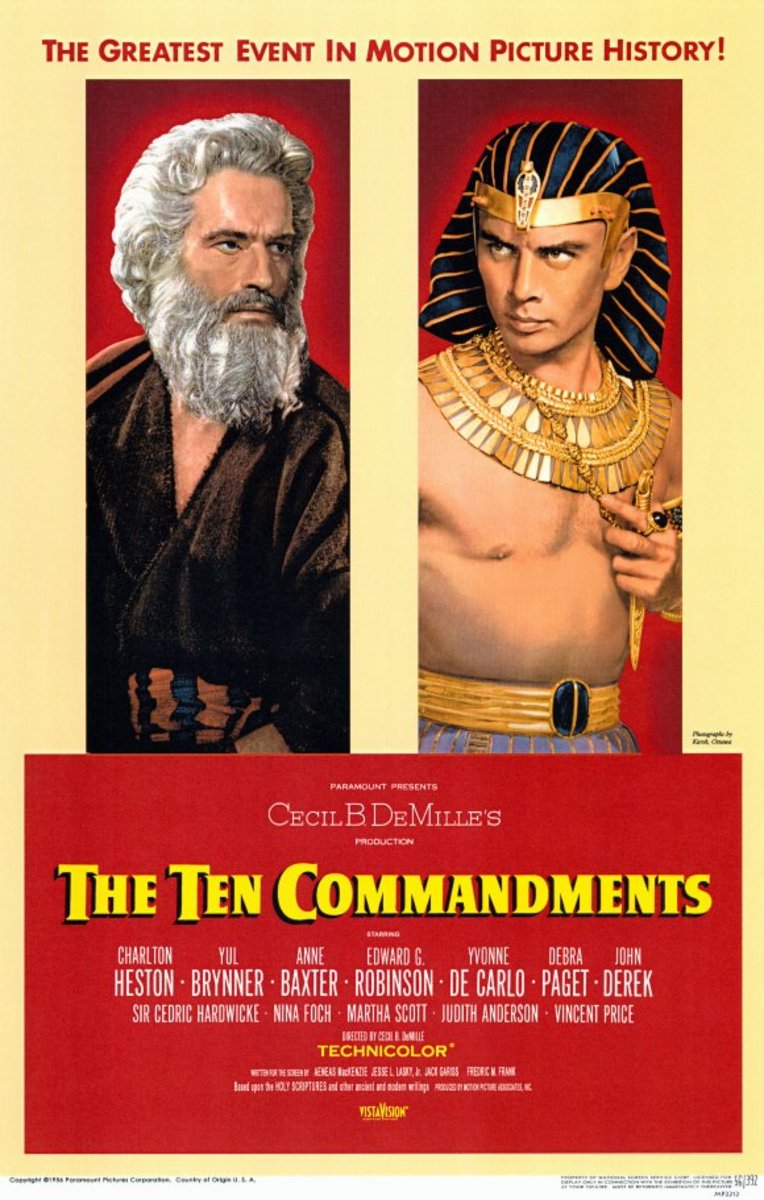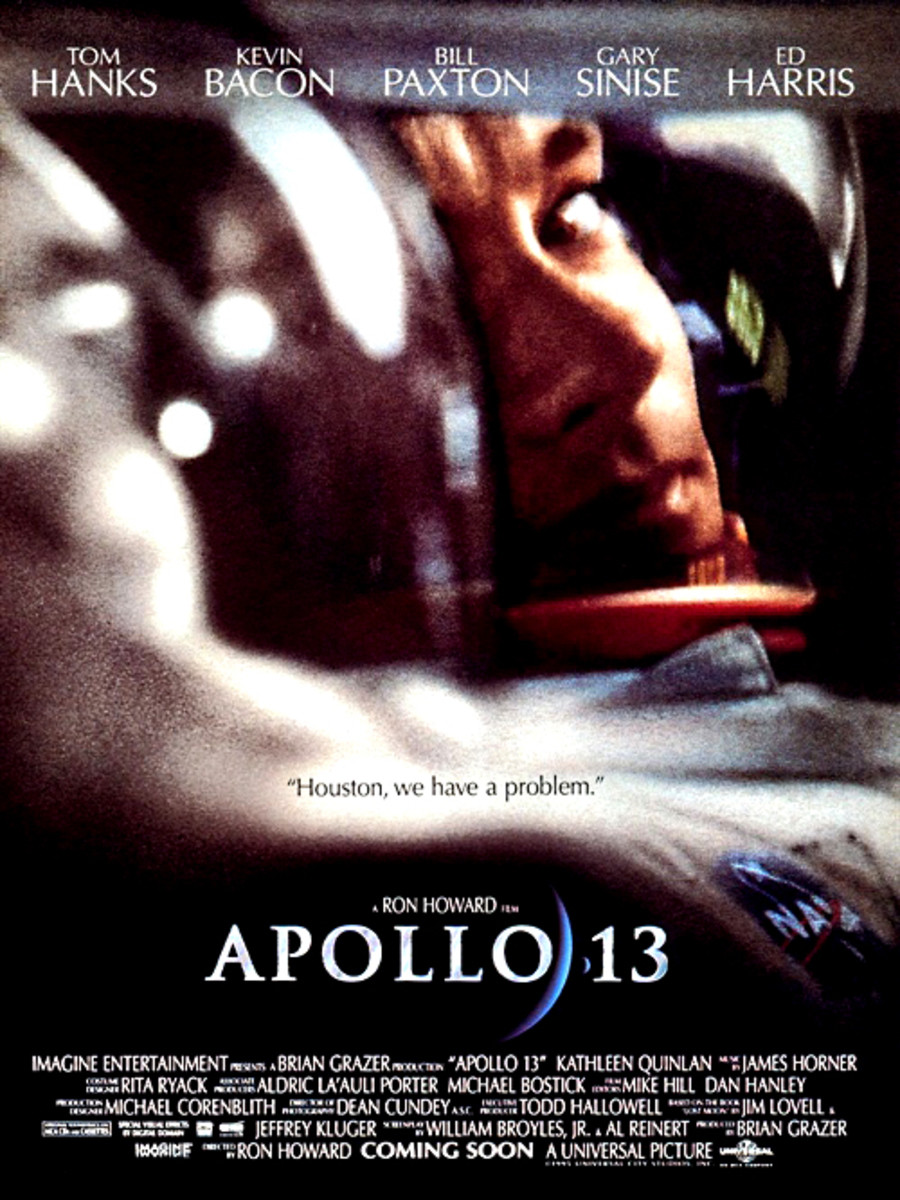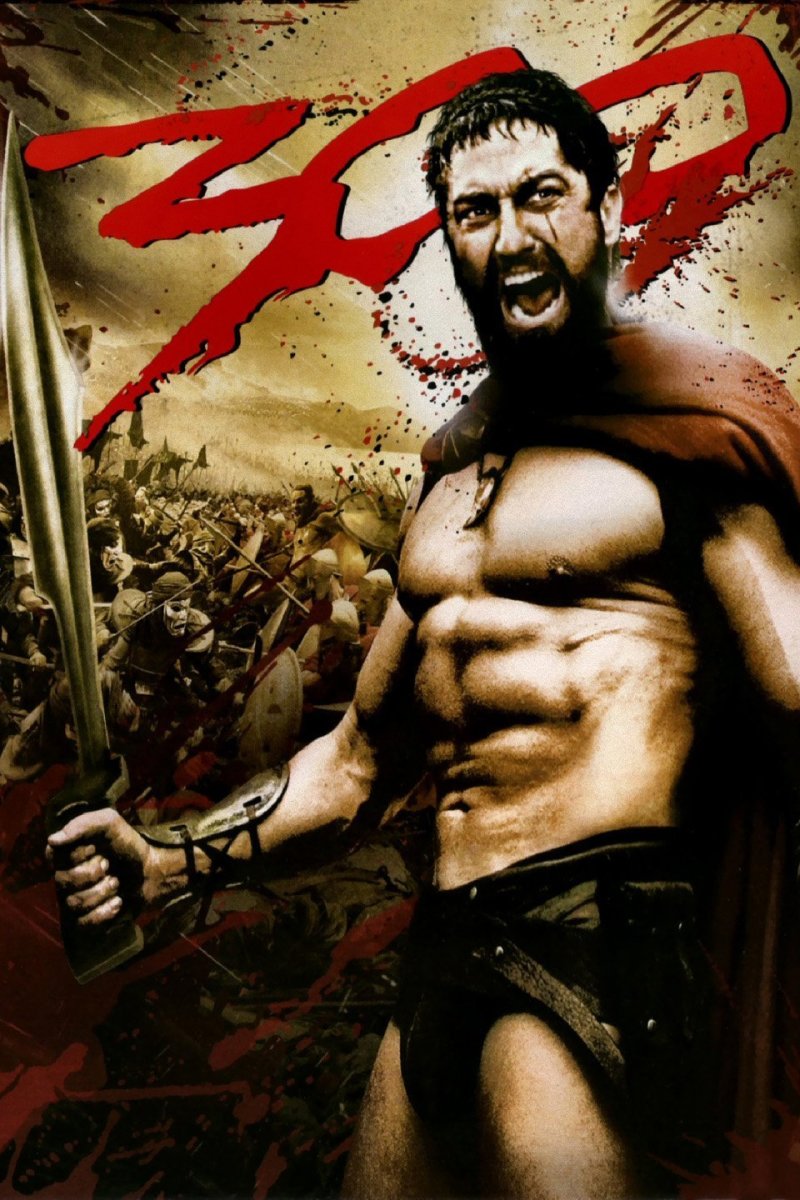Film Review: The Ten Commandments (1956)
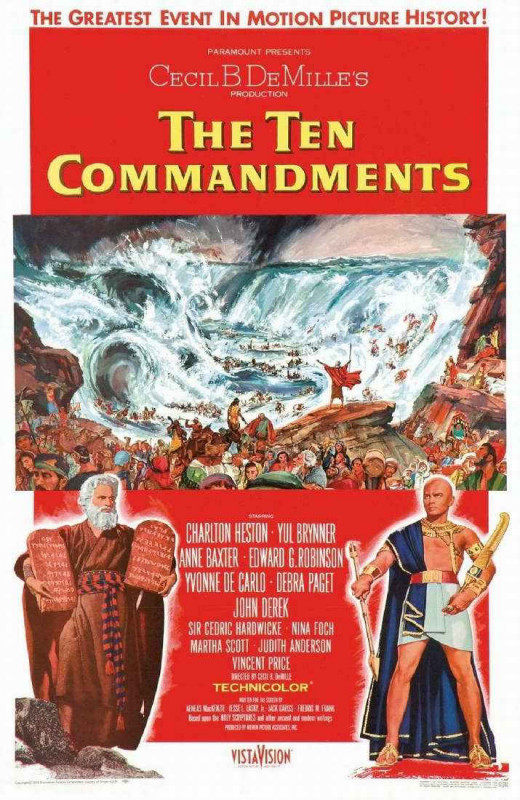
Background
In 1956, Cecil B. DeMille released The Ten Commandments, based on the biblical story of the life of Moses and the Exodus. Starring Charlton Heston, Yul Brynner, Anne Baxter, Edward G. Robinson, Yvonne De Carlo, Debra Paget, John Derek, Sir Cedric Hardwicke, Nina Foch, Martha Scott, Judith Anderson, Vincent Price and John Carradine, the film grossed $122.7 million at the box office. Nominated for the Academy Awards for Best Color Art Direction, Best Color Cinematography, Best Color Costume Design, Best Film Editing, Best Sound Recording and Best Picture, and the Golden Globe Award for Best Actor - Drama, the film also won numerous awards including the Academy Award for Best Special Effects, the Boxoffice Blue Ribbon Award for Best Picture of the Month for the Whole Family, The Christian Herald's Readers Award for the Picture of the Year, and a Special Award from Photoplay Awards for DeMille's "creation of the screen's greatest emotional and religious experiences." The American Film Institute also placed it on its Top 10 Epic Films list at #10, on its list of Top 100 Most Inspiriting Films list at #79 and on its Top 100 Heroes List at #43.
Synopsis
After Pharaoh Rameses I of Egypt orders the death of all firstborn Hebrew males, a Hebrew woman saves her son by setting him in a basket on the Nile. Found by Pharaoh’s daughter Bithiah, he is adopted and grows up to become a successful general. However, his fate is soon to change.
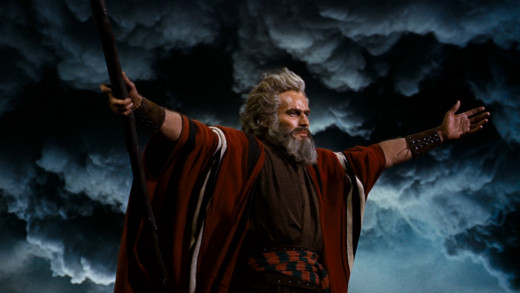
Review
The last of DeMille’s epic films, The Ten Commandments is a very well-done and well-made, casting so many interesting characters played by such great actors. For one, there’s Moses himself. Early on, it establishes that he’s going to be a great leader by showing that he understands the link between healthy and happy slaves and productivity. In his defense for giving them increased rations and a day of rest, he explains that the strong make many bricks, while the weak make few and the dead make none. What really makes the scene is that Rameses drops small weights onto a scale while Moses is explaining, which are going against him. However, Moses responds to that by dropping a brick onto his side of the scale. Great characterization, great acting and great symbolism.
Even before Moses decides to open the temple granaries and give them a day of rest, he is seen being kind to them. He listens to a slave’s petition to save a woman, his real mother, from being crushed. In fact, said slave is told to go to Moses, which means the man had already had a reputation for being merciful and kind to them in the past.
He also displays kindness, mercy and grace the other way around. After coming back to free the Hebrews, his adoptive mother joins Moses during Passover while he shuts the protestors up, showing that even though Moses ended up against Egypt, he still showed her love.
There’s also Moses’ adoptive father, Sethi. Though he banishes Moses and orders that his name never be spoken of in Egypt again, it’s shown that he still loves him when he’s on his deathbed. His final words are breaking his own law and speaking Moses’ name.
Though Rameses is the villain in the film, he’s still given interesting characterization that makes into a hard to dislike anti-villain. For one, it’s not his fault that Moses is more competent and Sethi favors the latter. Further, he has genuine sympathy towards his men. Also when Dathan accuses Moses, Rameses is ready to kill him before hearing him out, showing that he still realizes that Moses is family, even though he’s adopted. There’s him exiling Moses when he could have killed him. Having grown up and shared history together, it’s plausible that Rameses couldn’t bring himself to kill Moses.
Alongside the acting, the film’s special effects are also done incredibly well, especially when it comes to the parting of the Red Sea. Accomplished by digging out two parking lots and creating artificial waterfalls on either side, with the parting most likely filmed by reversing it, it still holds up to the test of time as one of the greatest feats of special effects prior to computer usage. God’s fire also looks spectacular.
the postings on this site are my own and don't necessarily represent WNI's positions, strategies or opinions.

